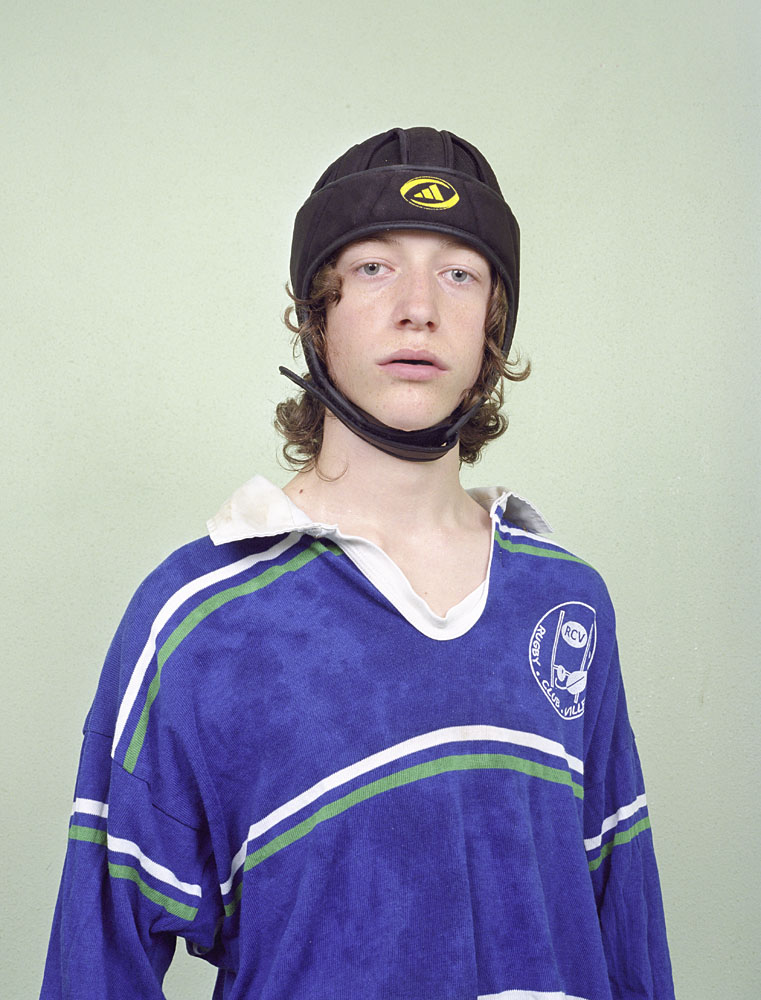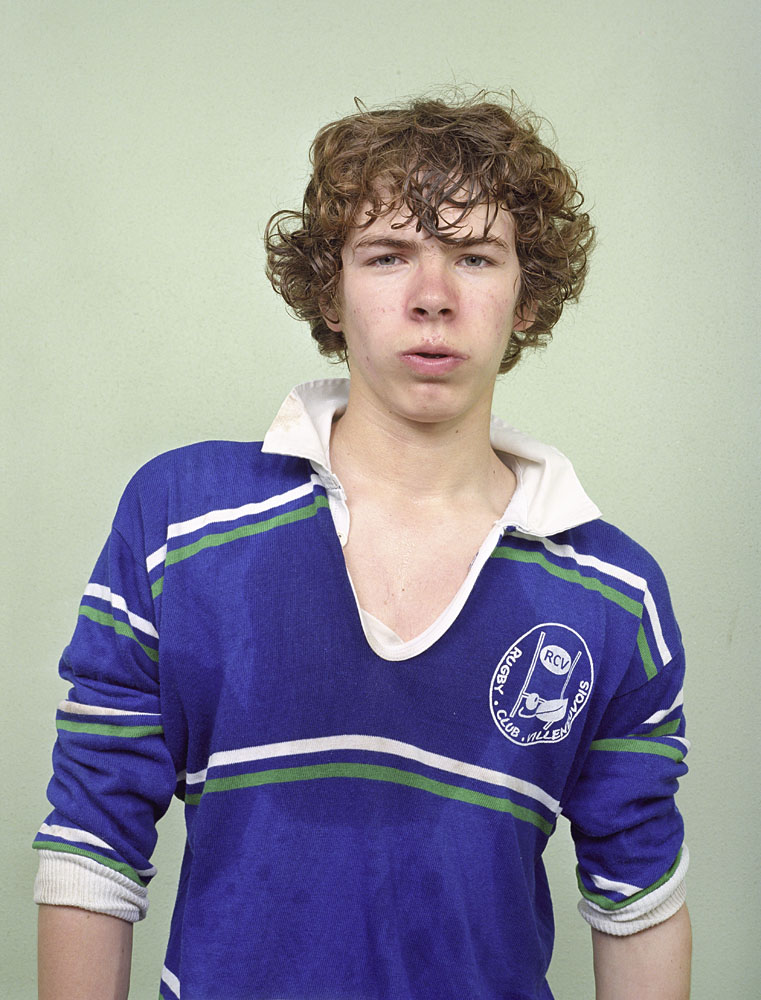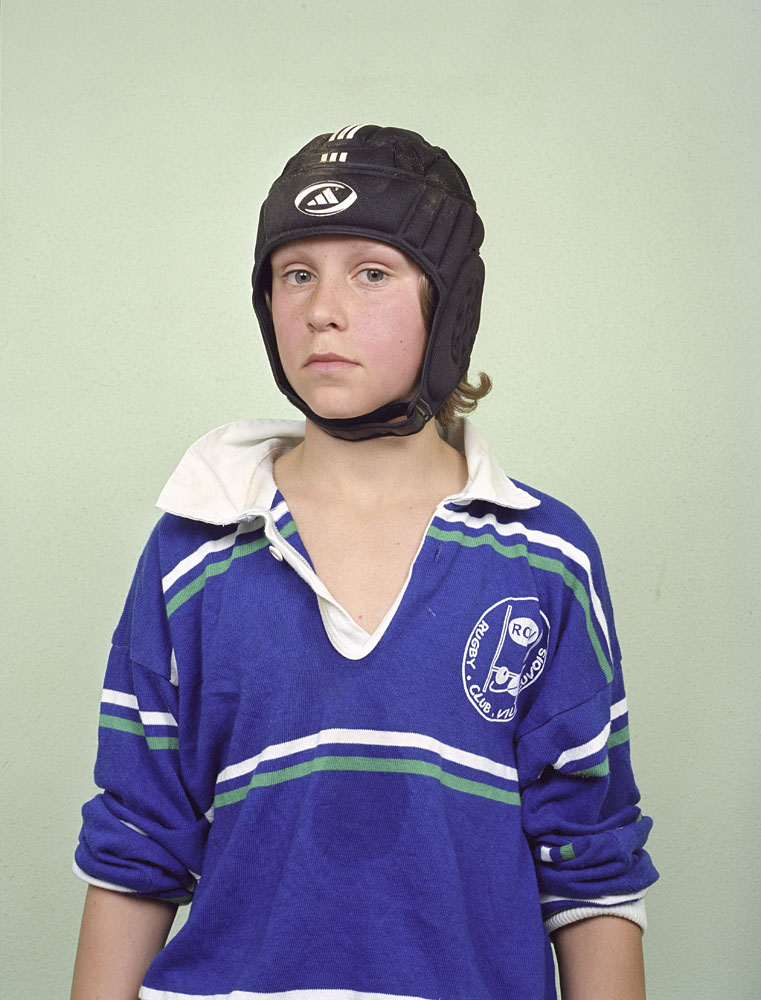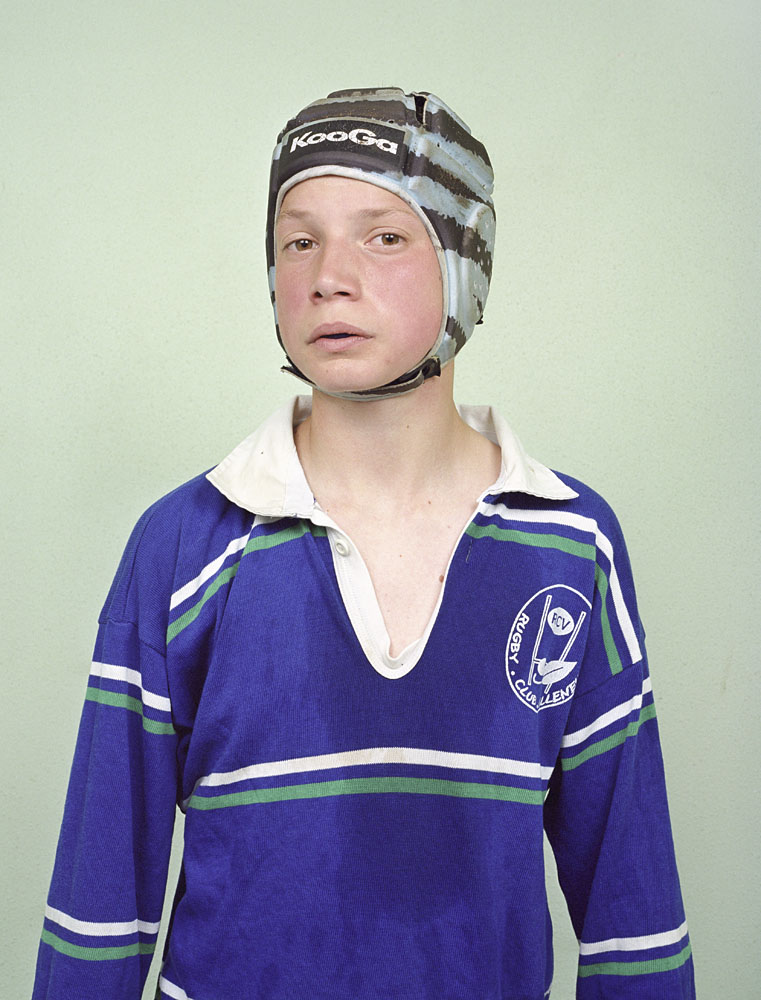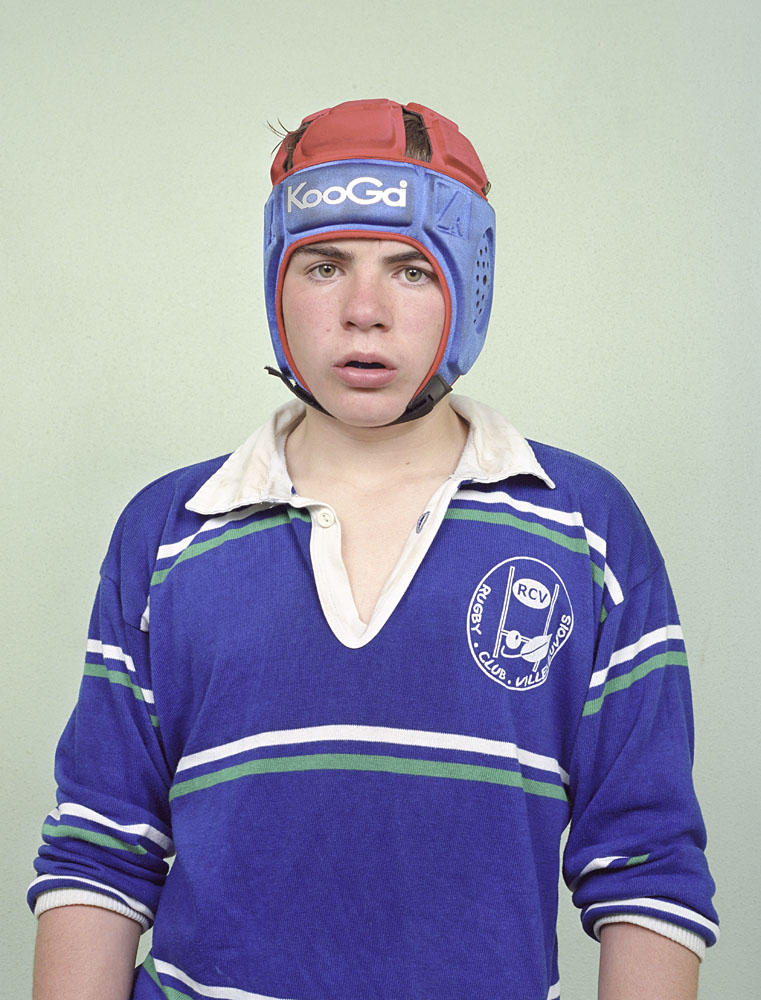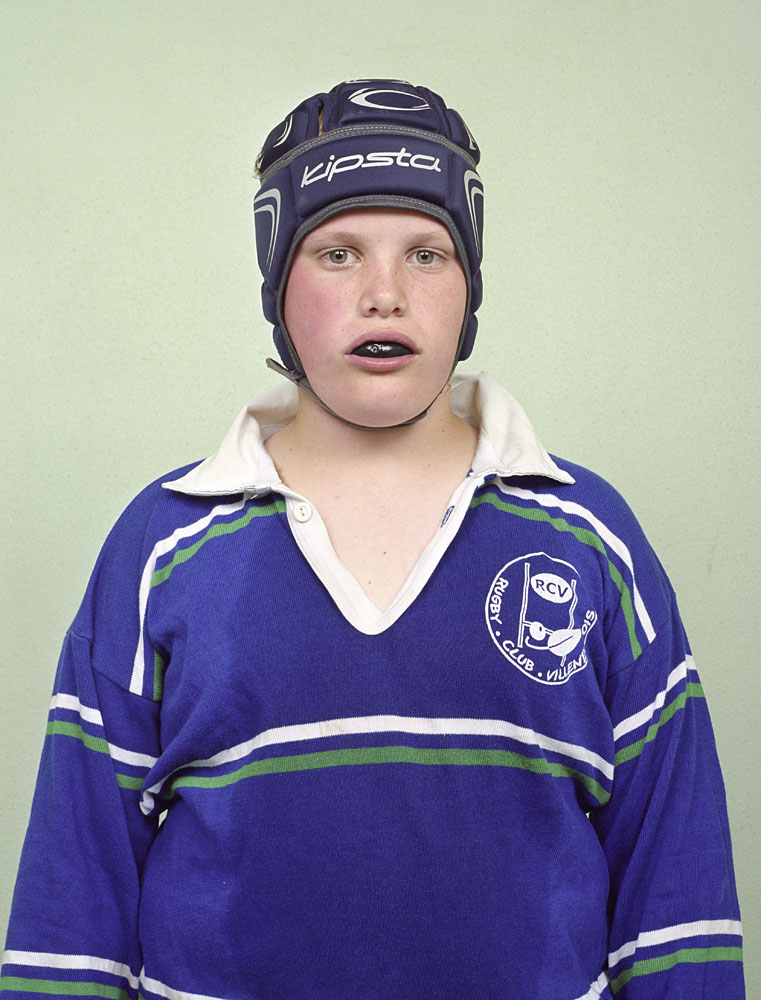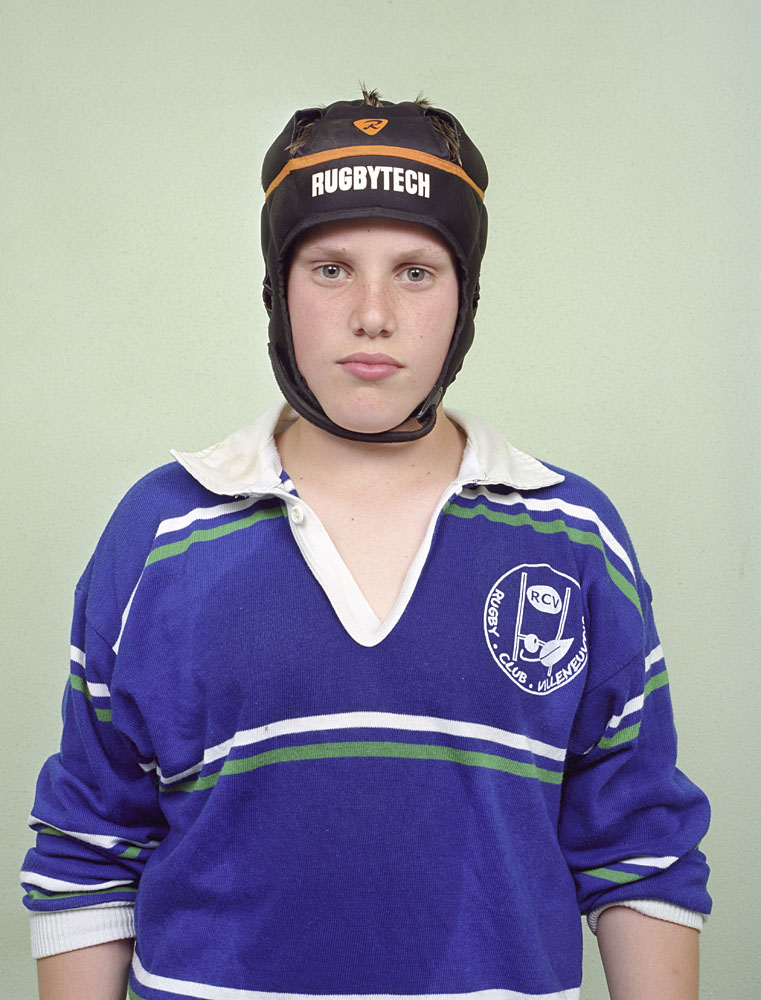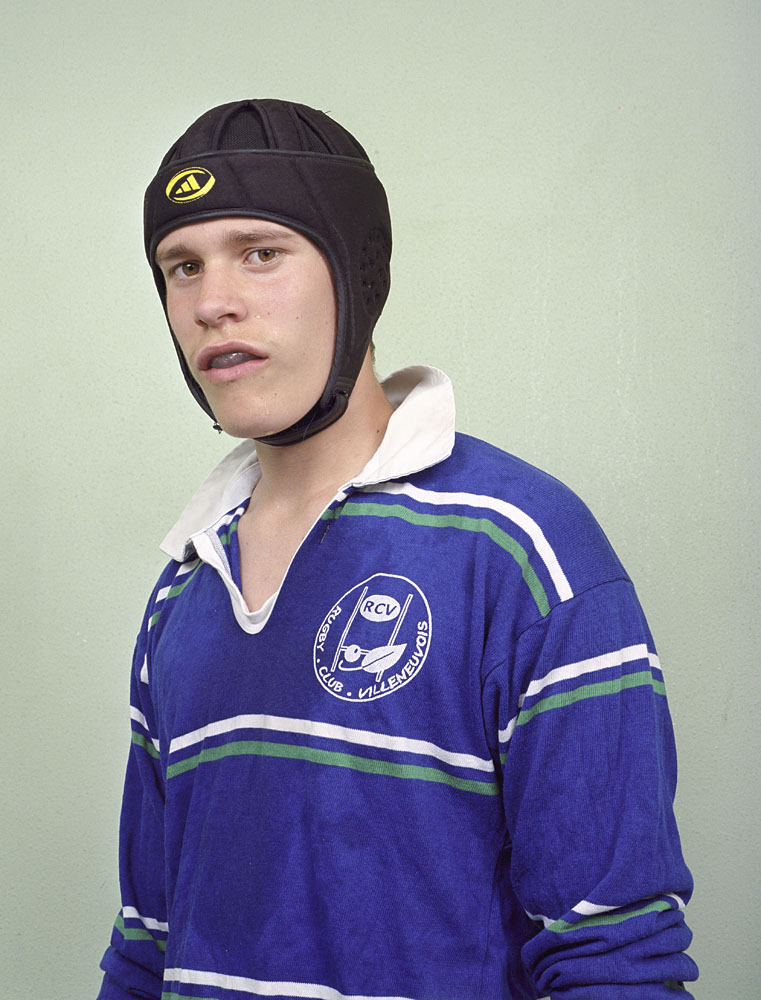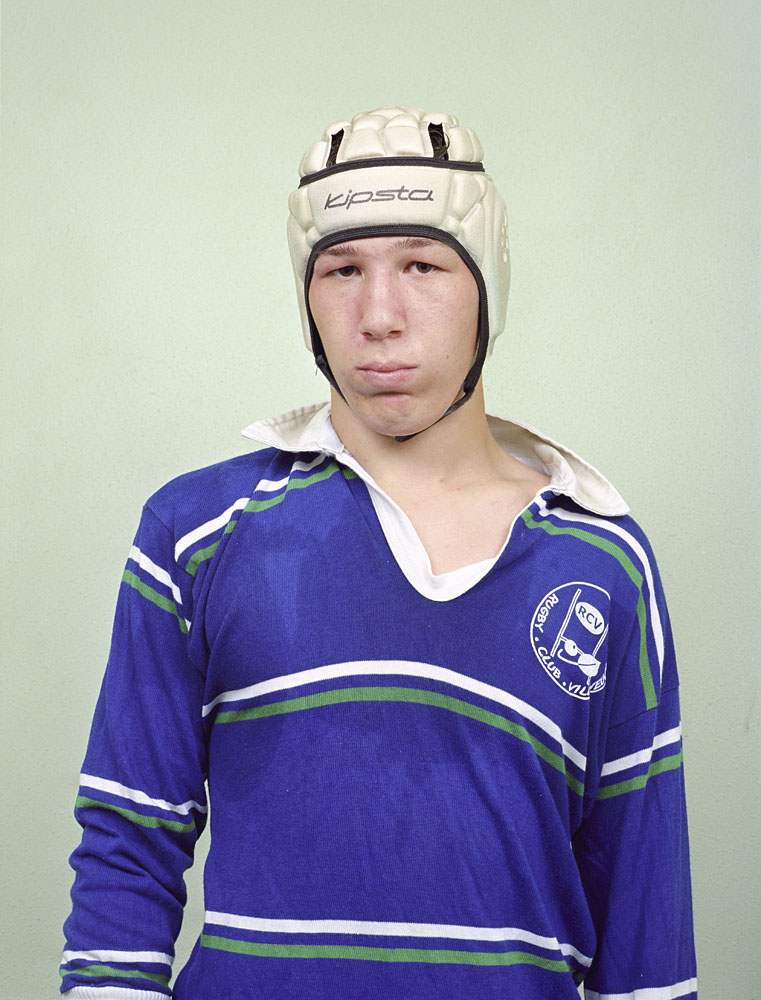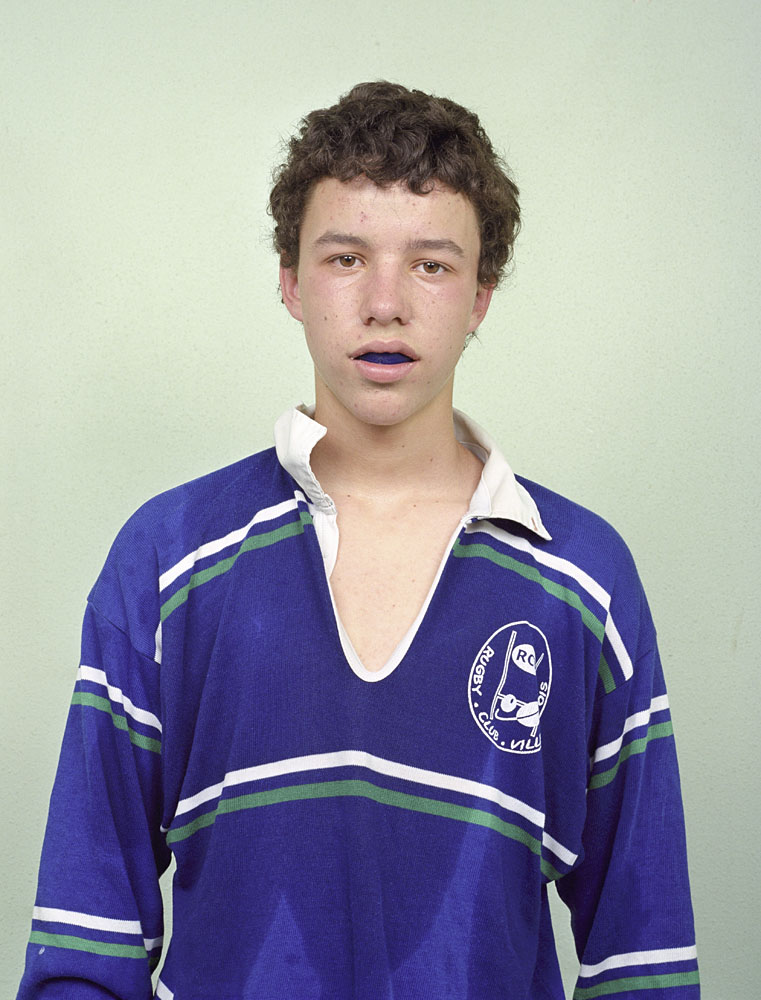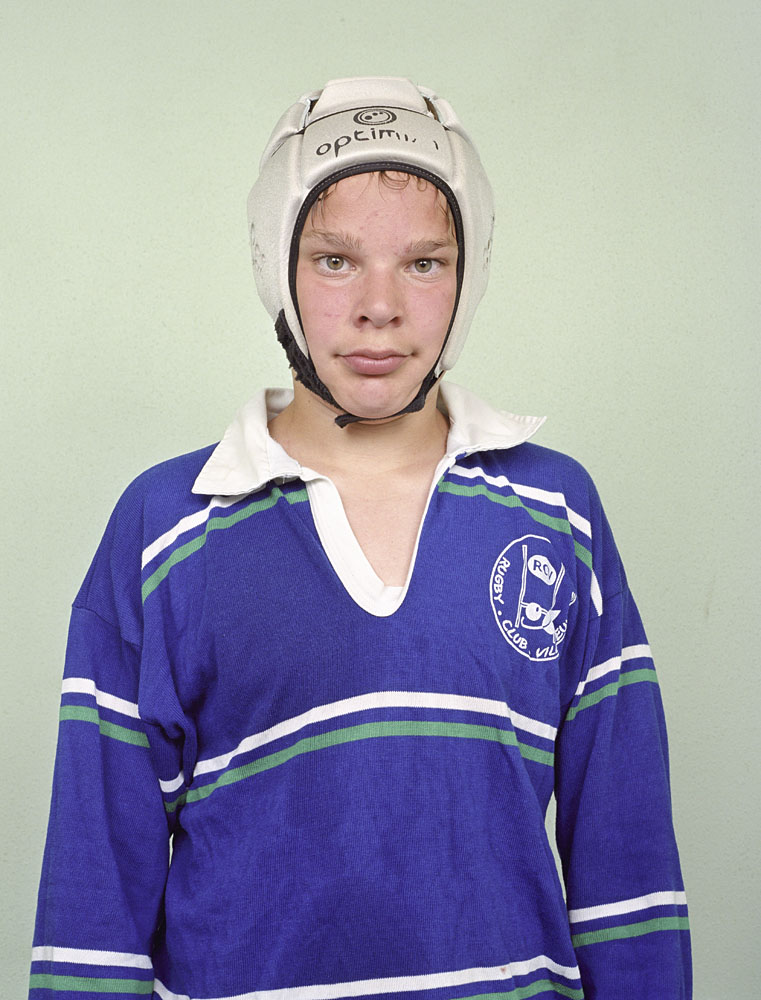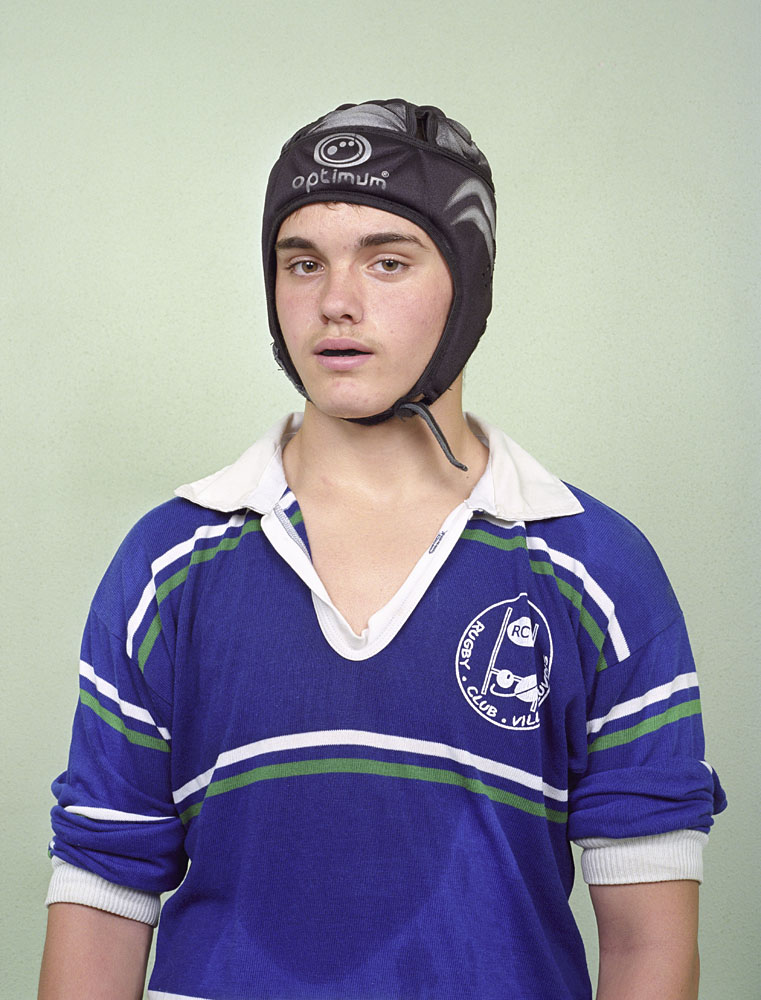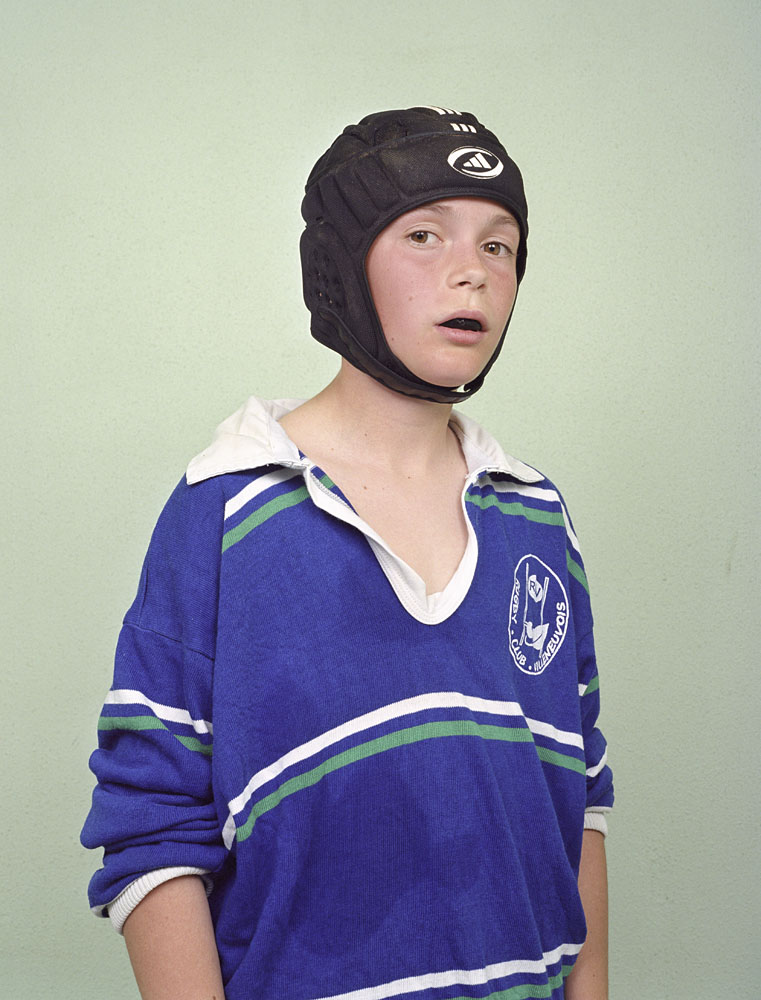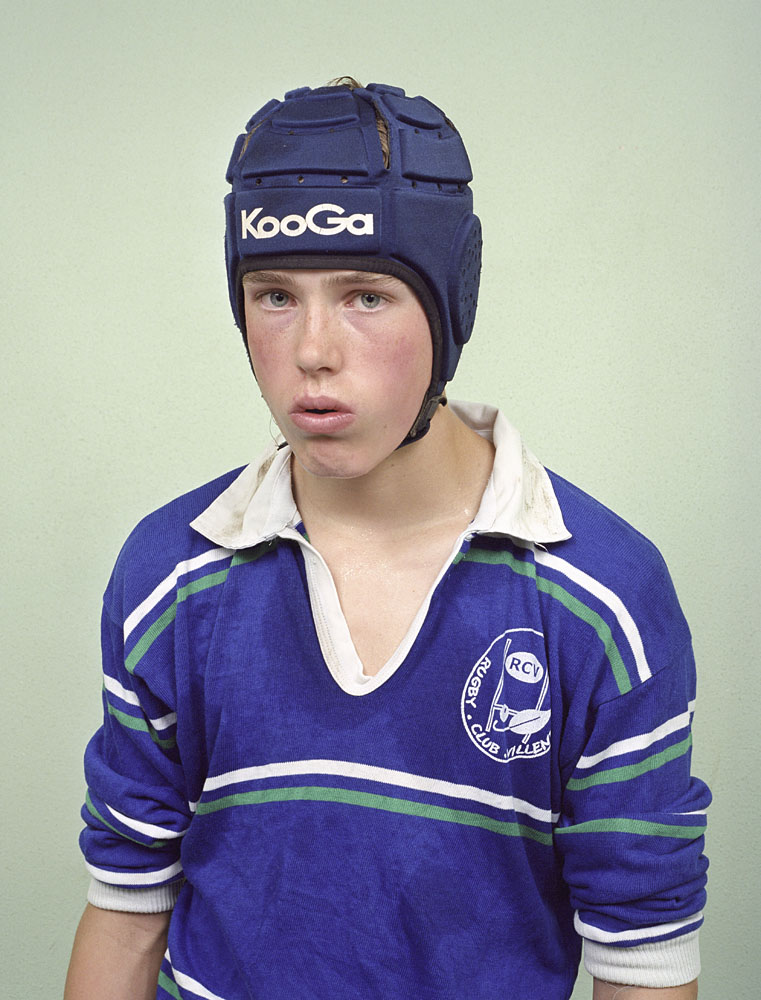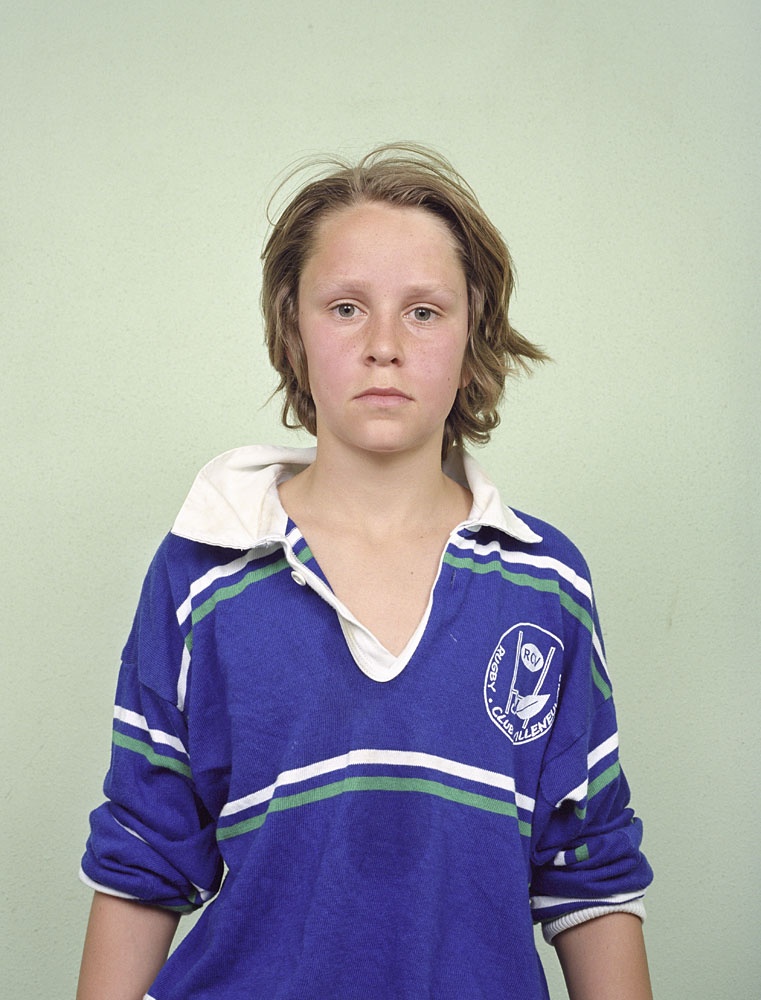With this series Charles Fréger goes back over ground that he marked out in the Water-polo series. This time, as he did with the swimmers, he photographed rugby players immediately after training. They, too, are young and we are aware that they are tired. Also like the swimmers, they wear a cap – in this case a scrumcap – and the uniform is completed with a gumshield. Their chests are covered – with a rugby shirt in the club’s colours: blue, white and green, with a sweat stain of variable geometry in the middle. In the five years since Water-polo, Fréger had made more than twenty series, some of which, like Empire or Rikishi, had brought about a change in his artistic approach: a break with his strict front-on rule, greater interaction with the surroundings, a mise en abîme to heighten the imaginary world of the subject (by, for example, including painted pictures within the photograph), and a conscious effort on his part to gain access to the inner circle of the community he was photographing. In this context, Maul, with its gallery of front-on, head and shoulder portraits shot against the changing room wall, is a sort of return to fundamentals. If some series, because of their size, amount to what might be termed a photographic campaign or mission, Maul is a small set, created on the hoof and shot according to the rapid rhythm imposed by the boys’ arrival in the changing room. The series, then, was like a quick incursion into familiar territory in order to check that the markers placed there over the previous few years were still in place. Having ascertained that they were, the photographer was free to explore new, larger, more mountainous territories, where performance combines with theatrical parade.
